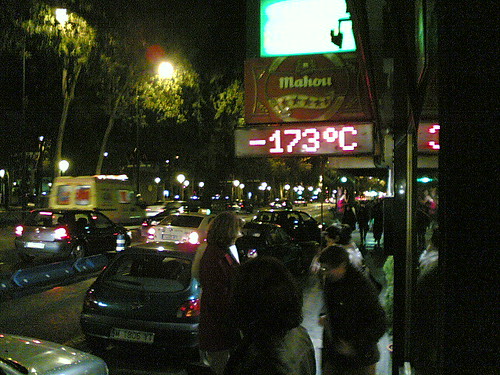The Opaque Smart Grid
Posted: January 3rd, 2010 | No Comments »The recent fiasco of PG&E smart grid installation in California provides some valuable insights on the integration of real-time meters of urban activities and people’s appropriation of the information fed back to them. Indeed, one of the advantages of a smart grid is that the two way flow of information communicates home energy consumption information and in return allows utilities to alert customers to real-time electricity pricing (see ‘Smart meters’: some thoughts from a design point of view). Yet, it seems that this mechanism failed in Bakersfield, CA, residents complaining that meters are logging far more kilowatt hours than they believe they are using. It is potentially due to technical reasons and certainly for the lack of transparency in the design of the system.
First, there is a lag between the installation of smart meters and the deployment of the in-home network that provides value to the consumer. The lag is so great that that the consumer started to feel disenfranchised. Indeed, “currently there are no in-home energy management displays or dashboards accompanying the new smart meters. Customers have no way to know how much their energy usage is costing in real time and… the utility does have plans to install these in the future” (see PG&E smart meter problem a PR nightmare).
Then, the system does not communicate its new rules. If customers do not shift demand to off-peak times when rates are lower, as argued by PG&E (see PG&E smart meter communication failure – lessons for the rest of us), then it means that the system fails to communicate the value of shifting demand or the time when rates are lower.
Finally, the rolled-out system is opaque in communicating its state. As exemplified in this tweet the design does not integrate failures and user inquiries: “I’m waited for PG&E to put up the daily usage numbers, I won’t get those until next month for some unexplained reason“.
A near-future evolution of smart grids, in a perfect internet of things world, is that consumers can “set and forget” to constantly monitor anything. Appliance makers such as General Electric and Whirlpool are developing smart appliances capable of doing the monitoring on the behalf of their owners. At what level will this extra layer of automation disenfranchise or empower us? How will the practice of organizations controlling hard infrastructure integrate the specificities of soft infrastructures.
Why do I blog this: Fascinated by the fact the roll-out of “smart grid” system, meant to empower both energy consumers and producers, led to people feel disenfranchised. The organizations that have controlled hard infrastructure for decades have still a lot to learn from designing their newly, internet-of-things-powered soft infrastructures. More than communicating accurate data, they are requested to design and make their overall process (e.g. data collection and handling) more transparent. The Bakersfield fiasco is an example of the new frictions PG&E and the likes will learn from as their are getting closer to people, metering their consumption on an hourly basis and feeding them back information in real-time. What kind of friction will occur when a governmental institution gets similarly more deeply involved in soft infrastructures, such as vehicle tracking initiative in Holland?

An armless erroneous temperature reading

